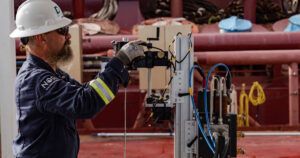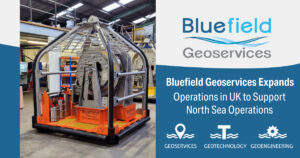When it comes to marine geotechnical survey, just getting to the work site can have a high impact on the environment. And then, once there, offshore geotechnical site investigation requires direct interaction with the seabed and these disturbances can lead to sediment plumes, uncontrolled releases of contaminates, and even equipment loss.
As a company we can aim to implement procedures ourselves and influence our client’s operations to reduce harm to the environment. This is a natural extension of our risk management strategy, and a prevalent feature of any of our offshore environmental consulting projects. By adopting appropriate risk management techniques, we believe it possible to significantly curb the environmental impacts of geotechnical data collection at depth.
An example? The use of biodegradable oil in a system versus traditional mineral oil; in the event of a system failure the environmental impact is far lower. This, combined with regular maintenance checks and hose management, reduces the likelihood of failure, which then results in less system downtime and higher productivity.
Modern, environmentally friendly drilling fluids are another consumable that mitigate against environmental impacts. These, when used correctly, eliminate water contamination, reduce the seabed plume, and are more efficient by volume for any given borehole. The lower volume required also reduces any costs or impacts associated with avoidable logistics.
A more complex example is the biological cross contamination of marine investigation sites. Historically, the assumption has been that organisms living at significant depths are unable to survive the pressure changes associated with being recovered rapidly to the ocean surface. Consequently, decontamination procedures were never prioritized when transferring assets between offshore geotechnical survey sites. It has since been proven, however, that this is not the case, and that pristine scientific research sites have in fact been contaminated by flora and fauna picked up from a previous site. In one historical case, bivalves from one location hitched a ride on an ROV and went on to dominate the new site and edge out the existing bi valve population.
As the industry advances and seeks to introduce new instrumentation and techniques for subsea geotechnical survey, the potential impacts to the marine ecosystems must remain of paramount consideration. The team at Bluefield Geoservices, as we look to redefine geoscientific frontiers through progressive in situ seabed geosolutions methods and custom technologies, hold this in the highest regard.


